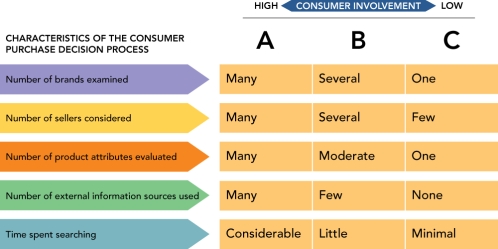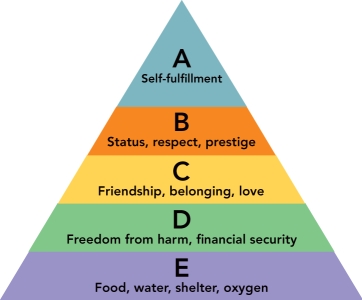A) determining appropriate price ranges
B) selecting the type of purchase outlet
C) suggesting criteria to use for the purchase
D) minimizing cognitive dissonance
E) establishing a purchase timeline
G) B) and D)
Correct Answer

verified
Correct Answer
verified
Multiple Choice
Women buy what percentage of new cars?
A) 15 percent
B) 30 percent
C) 45 percent
D) 60 percent
E) 75 percent
G) None of the above
Correct Answer

verified
Correct Answer
verified
Multiple Choice
Spouse dominant decision-making implies that
A) the husband makes the majority of the purchase decisions.
B) the wife makes the majority of the purchase decisions.
C) both the husband and the wife make the purchase decisions together.
D) the wife and the husband alternate with respect to their purchase decisions.
E) either the husband or the wife is primarily responsible for purchase decisions.
G) C) and E)
Correct Answer

verified
Correct Answer
verified
Multiple Choice
__________ is a VALS group that are the heaviest readers of Reader's Digest.
A) Experiencers
B) Believers
C) Makers
D) Achievers
E) Innovators
G) All of the above
Correct Answer

verified
Correct Answer
verified
Multiple Choice
 Figure 5-3
-Figure 5-3 above,column "C" represents which of the following in terms of consumer involvement and product knowledge?
Figure 5-3
-Figure 5-3 above,column "C" represents which of the following in terms of consumer involvement and product knowledge?
A) routine problem solving
B) limited problem solving
C) extended problem solving
D) simulated selection
E) integrated problem solving
G) B) and E)
Correct Answer

verified
Correct Answer
verified
Multiple Choice
Popularity created by consumer word of mouth is called __________.
A) hype
B) buzz
C) propaganda
D) socialization
E) buildup
G) D) and E)
Correct Answer

verified
Correct Answer
verified
Multiple Choice
Sources of external information that originate with the sellers of products and services and include advertising,company websites,salespeople,and point-of-purchase displays in stores are referred to as
A) relational sources.
B) public sources.
C) personal sources.
D) stakeholder sources.
E) marketer-dominated sources.
G) A) and B)
Correct Answer

verified
Correct Answer
verified
Multiple Choice
of the following variables are central to how consumers learn from repeated experience EXCEPT:
A) purchase
B) reinforcement
C) response
D) drive
E) cue
G) A) and B)
Correct Answer

verified
Correct Answer
verified
Multiple Choice
Firms such as General Electric (GE) ,Johnson & Johnson,Coca-Cola,and British Airways focus their attention on __________ to maximize customer satisfaction and retention.
A) value perception
B) postpurchase behavior
C) non-competitive pricing
D) comparison pricing
E) prepurchase behavior
G) B) and E)
Correct Answer

verified
Correct Answer
verified
Multiple Choice
Subcultures refer to
A) subgroups within the larger national culture, whose values and beliefs are diametrically opposed to foreign cultures.
B) groups within organizations whose values and beliefs influence the corporate culture.
C) subgroups within the larger, or national, culture with unique values, ideas, and attitudes.
D) stakeholder groups outside an organization whose values and beliefs are contrary to the corporate culture.
E) the designation given to people between the ages of 13 and 24 whose values and beliefs are not yet fully formed but are still influenced both by their families and society.
G) A) and E)
Correct Answer

verified
Correct Answer
verified
Multiple Choice
VALS framework segments consumers based on
A) their primary motivation for buying certain products and services and levels of resources.
B) their demographics.
C) their product usage.
D) where they live.
E) their media usage.
G) B) and D)
Correct Answer

verified
Correct Answer
verified
Multiple Choice
 Figure 5-5
-According to Figure 5-5 above,self-fulfillment is an example of the highest-order needs referred to as
Figure 5-5
-According to Figure 5-5 above,self-fulfillment is an example of the highest-order needs referred to as
A) physiological needs.
B) social needs.
C) safety needs.
D) personal needs.
E) self-actualization needs.
G) A) and D)
Correct Answer

verified
Correct Answer
verified
Multiple Choice
 Figure 5-1
-Figure 5-1 above,"C" represents which stage of the consumer purchase decision process?
Figure 5-1
-Figure 5-1 above,"C" represents which stage of the consumer purchase decision process?
A) purchase decision
B) information search
C) problem recognition
D) alternative evaluation
E) postpurchase behavior
G) A) and E)
Correct Answer

verified
Correct Answer
verified
Multiple Choice
Three teenage girls spent hours at a store trying on various outfits,looking at possible combinations,and asking each other,"How do you think this outfit looks on me?" This situation is most closely related to which of the following situational influences?
A) purchase task
B) social surroundings
C) physical surroundings
D) temporal effects
E) antecedent states
G) C) and D)
Correct Answer

verified
Correct Answer
verified
Multiple Choice
 Figure 5-3
-Figure 5-3 above,column "A" represents which of the following in terms of consumer involvement and product knowledge?
Figure 5-3
-Figure 5-3 above,column "A" represents which of the following in terms of consumer involvement and product knowledge?
A) consideration set
B) routine problem solving
C) limited problem solving
D) extended problem solving
E) integrated problem solving
G) C) and D)
Correct Answer

verified
Correct Answer
verified
Multiple Choice
evening while watching TV,your stomach growls.You see an ad for Subway.You walk to the Subway shop and buy a sandwich,which tastes great.In terms of behavioral learning,the great taste of the sandwich is a(n) __________.
A) reinforcement
B) achievement
C) drive
D) cue
E) response
G) B) and E)
Correct Answer

verified
Correct Answer
verified
Multiple Choice
consumer's purchases are often influenced by the views,opinions,or behaviors of others.Two aspects of personal influence that are important to marketing are __________ and word-of-mouth activity.
A) parental guidance
B) peer pressure
C) opinion leadership
D) government regulation
E) psychographics
G) A) and D)
Correct Answer

verified
Correct Answer
verified
Multiple Choice
American Floral Council used an ad that showed three flower arrangements varying in size from a single rose to a very large elaborate arrangement.The caption simply read,"Just how mad is she?" This ad relies on which of the following situational influences for its effectiveness?
A) purchase task
B) social surroundings
C) physical surroundings
D) psychological effects
E) antecedent states
G) B) and D)
Correct Answer

verified
Correct Answer
verified
Multiple Choice
According to Figure 5-2 above,which of the following brands would be the best choice if the consideration set for a smartphone included the following rank-ordered evaluative criteria: (1) display, (2) voice quality, (3) battery life,and (4) price?
A) Apple
B) BlackBerry
C) HTC
D) Motorola
E) Samsung
G) B) and E)
Correct Answer

verified
Correct Answer
verified
Multiple Choice
There are five stages in the consumer purchase decision process.The second stage is __________.
A) information search
B) purchase decision
C) alternative evaluation
D) postpurchase behavior
E) problem recognition
G) B) and C)
Correct Answer

verified
Correct Answer
verified
Showing 41 - 60 of 361
Related Exams